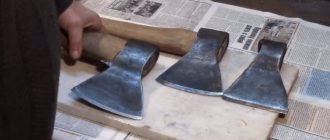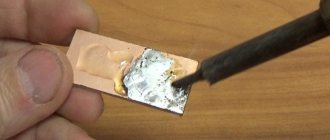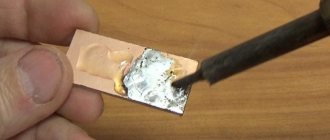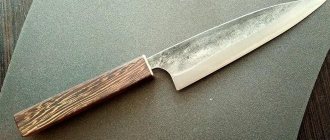25Feb
- By: Semantics
- Uncategorized
- Comments: 0
If we take a course in general physics for representatives of technical professions, then the section on the properties of ordinary iron occupies almost ten percent of the entire volume of the volume. Many craftsmen are actively interested in how to properly harden metal at home with their own hands (on their own). You must understand that in handicraft workshops it is almost impossible to obtain a stable, ideal result. But it is quite possible to radically improve the operation of the product.
How to create steel in Conan Exiles
Much of Conan Exiles is based on crafting various items. It is thanks to him that it is possible to create new tools, weapons and armor. The better the player has these things, the stronger his hero will be. However, to develop the most durable and deadly products, you will need quite rare materials, which include steel and steel ingots. Unlike other resources, you cannot extract them in open areas, but only create them using special machines and furnaces. Below we will tell you how to do this.
Cooling
The most important disadvantage of carrying it out quickly is the threat of large stresses in the heart of the product, which often lead to cracking and warping of the raw material.
To avoid troubles, they prefer to place iron in oil. This does not apply to high carbon steel; the best medium for it is water. In addition, colloidal compositions containing salts and acids are used, which avoid creating unnecessary tension and tension.
Deciding on the method of cooling the part is based on what shape it has:
- An object having a thick end and a thin end is first placed into the liquid with the bulk end;
- Drills, taps and other elongated products are placed in a vertical position to avoid cracking and deformation;
- After applying local heating, the entire element is immersed in the cooling medium.
Making Steel Bars in Conan Exiles
We covered the basics of crafting in our special guide, where we roughly talked about what level you need to be in order to engage in blacksmithing, so we won’t repeat the material we covered, but will immediately get down to making steel. For this procedure you will need 3 machines at once:
- A cauldron for igniting a fire.
- Tanning machine.
- Smelter or crucible.
Unfortunately, you can't do without these structures, so don't think that you can start forging steel weapons after a couple of hours of play. To do this you will have to spend a lot of time. So, the manufacturing procedure itself consists of the following steps:
- You need to mine iron ore and smelt it into iron bars (1 ingot will require 2 units of ore). Branches, wood or coal can be used as fuel (it burns much longer). This entire process is carried out in a crucible.
- Now you need to create tar, which is a secondary raw material. It can be obtained by tanning hides on a tanning machine. Along with 1 bowl of tar, you will also receive 1 unit of leather (thick or thin). It is worth using tree bark as fuel, since it is this that provides the resource we need.
- Then we try to make steel fire, which is a catalyst, without which it is impossible to make steel. It is created in a fire cauldron using tar and sulfur. From 2 bowls of tar and 1 unit of sulfur you get 2 units of steel fire. You can use wood, branches or coal as fuel.
- The last step is to take the iron bars and place them in the smelter along with the steel fire. Next, start the furnace and get steel bars at the output. To create 1 steel bar you will need to spend 1 unit of steel fire and 5 iron bars.
You're probably wondering where you can get sulfur. You can find this material in caves or get it from the corpses of monsters, which in the game are called Stonehorns (similar to giant lizards). After killing such a creature, you need to cut up the corpse using a pickaxe. It is better to use an iron tool to get more useful materials. By the way, these creatures also drop materials such as stone and crystal. The latter is placed in a crucible to create glass. You can find stonehorns in the northeastern part of the map, which looks like a three-toed paw. Below we have placed a map where sulfur deposits are indicated by yellow circles. You can also see that same “foot” there.
Let us add that in the location where the stonehorns live, you can also encounter Royal stonehorns, which can kill your hero in one or two hits, so we do not recommend going to these lands with an unprepared character.
Application of rust varnish
This bluing agent is often used to obtain a smooth and even surface. It contains steel shavings, but they can be replaced with cast iron shavings. In this case, financial investments will be minimal. In this case, the workpiece must be placed in a chemical agent. The result is red or black iron oxide. This instruction, as a means for cold bluing, gives a long-lasting and effective result.
To get rid of red deposits, use a brush with fairly stiff metal bristles. As a result, only black oxide remains.
First, the metal is machined and degreased. Then the product is placed in a special composition. The bluing agent is prepared in a porcelain container. It is important to wear gloves to protect your skin. The composition is made using hydrochloric acid. It is poured in a small amount into a container. It is mixed with metal filings, nitric acid and iron rust.
The mixture is stirred well until the chemical reaction, which is accompanied by the release of gas, stops. Add water and regular vodka to the mixture in equal proportions. Finally, it is left for a certain time until it settles. Then it is drained to remove scale and salts that have precipitated.
When the mixture is ready, the metal product being processed is placed in it. It is kept until it turns black. After this, it is washed under strong pressure of running water.
In the video: bluing with rusty varnish.
Manufacturing process
We extract iron ore and smelt it into iron bars (2 ores = 1 bar), use coal, wood or branches as fuel (coal burns longer). Machine "Crucible".
We produce tar, a secondary raw material obtained by tanning hides on a tanning machine (1 leather (thin, thick) 1 bowl of tar). Tree bark is used as fuel and tar is obtained from it.
We produce steel fire - a catalyst for steel production (hereinafter referred to as catalyst). The catalyst is produced in a fire boiler from sulfur and tar, the ratio is 1 sulfur 2 tar = 2 catalysts. Fuel - coal, wood, branches.
Now the most important thing is where to get sulfur. Sulfur is obtained from the corpses of killed “Stonehorns”, which are similar in appearance to the Moloch lizard. The body needs to be cut with a pickaxe, because... it will produce more sulfur (fine pickaxe + 6, + 7 units of sulfur), in addition, it will drop stone and crystal for making glass in the smelter (crucible). Stonehorns live, well, at least I met them there, in the northeast, in the lands in the form of a “three-toed paw.” You can also find sulfur deposits in a cave in the northeast not far from the sanctuary of Myrtle, but there are just a terrible bunch of spiders and filth there.
We put iron bars in the crucible and start a steel fire and get a steel bar (5 reinforced concrete + 1 cat. = 1 steel bar).
PS I would like to draw your attention to the fact that in the lands where stonehorns live, there are also royal stonehorns, and they are very dangerous, they can kill you in one or two clicks, so before going to these lands, set your defense stats and damage as high as possible, well And don’t forget about your health, but it’s better to go in a group.
In the next guide I will describe how to get hardened brick.
To make hardened bricks we need two machines:
- Crucible (smelter).
- Fire cauldron.
The manufacturing process itself:
- We extract stone and burn it into bricks (10 stone = 1 brick), use coal, wood or branches as fuel (coal burns longer). Machine "Crucible".
- We make a stone compactor in a fire cauldron, for this we need insect “ichor” and string (2 ichor + 5 strings = 5 pieces of stone compactor).
- We make hardened brick in the Crucible (1 brick + 1 stone compactor = 1 hardened brick). I don’t think there’s any need to explain how to make twine. As for ichor, it is extracted from arthropods, the arachnid family (spiders and scorpions). There are three types of spiders (at least I have met): blue (the strongest among spiders), gray, black (these are less durable).
How to create a Steel Ingot in Conan Exiles
- We extract iron ore and smelt it into iron bars (2 ores = 1 ingot), use coal, wood or branches as fuel (coal burns longer). Machine "Crucible". The map below shows where iron ore can be found, indicated by gray circles.
- We make tar, obtained by tanning hides on a tanning machine: 1 skin = 1 bowl of tar. Tree bark is used as fuel, and tar is obtained from it.
- We make steel fire - a catalyst for steel production. The catalyst is produced in a fire boiler from sulfur and tar, the ratio is 1 sulfur + 2 tar = 2 catalysts. Fuel - coal, wood, branches.
- Now the most important thing is where to get sulfur. Sulfur is obtained from the corpses of killed “Stonehorns”, which are similar in appearance to the Moloch lizard. The body needs to be cut with a pickaxe, because... it will produce more sulfur (iron pickaxe + 6-7 units of sulfur), in addition, it will drop stone and crystal for making glass in the smelter (crucible). Stonehorns live in the northeast, in lands in the form of a “three-toed paw”. More sulfur deposits can be found in a cave in the northeast near the sanctuary of Myrta, but there are many spiders and filth there.
- We put iron ingots and steel fire into the furnace. As a result, we get a steel bar (5 iron ingots + 1 steel fire = 1 steel ingot).
How do beneficial and harmful impurities affect the properties of steel?
Effect of various elements in steels:
- Manganese increases the hardenability of the metal and neutralizes the harmful effects of sulfur.
- Silicon improves strength and promotes deoxidation of the alloy, removing oxides and sulfides.
- Sulfur impairs plasticity and viscosity. Its high content is manifested by red brittleness: during hot processing, the metal cracks in the area of red or yellow heat.
- Phosphorus reduces the ductility and toughness of the alloy. An increased content of phosphorus leads to cold brittleness: during mechanical processing, the metal cracks or breaks into pieces.
- Oxygen and nitrogen destroy the structure of steel, impairing toughness and ductility.
- Hydrogen makes the metal brittle.
To remove harmful impurities and non-metallic inclusions, liquid steel is refined. Combined refining is used in the furnace and outside the furnace. For example, deoxidation, desulfurization, degassing and more. Due to cleaning, the metal structure becomes homogeneous and the quality increases.
Steel in Conan Exiles - farming and production
Hello readers who survived and were enslaved by the bracelet in Conan Exiles! In this post, we will look at options for obtaining steel bars - farming and production: how to make steel, where to get the necessary crafting components, what to use.
Farm NPC - New Asgard or Blight Mounds
The northern regions allow the player not only to level up by killing strong slaves, but also to successfully farm steel using rich loot.
The main points for farming steel are New Asgard and the Blight Mounds.
In New Asgard, players can profit from iron tools, steel and silver ingots, kitchen utensils, armor, and food. And you can also get good slaves there to start with. Don't forget about the chests: you will find additional loot in them.
In addition, Asgard is a midi city in terms of slave power. The mounds, on the other hand, are a more serious location, with Cimmerian aggressive slaves.
How to farm: with bedding nearby, aloe extract, good armor. It’s also a good idea to have a wheel of pain near the farming site to replenish slaves.
Steel making
To craft steel, the player must be level 15 and have unlocked the talents Blacksmith (level 10), Leatherworker (level 10) and Fire Cauldron (level 15).
At level 10, you will need 540 stone to craft a furnace. Create a furnace, install it and start mining iron ore, while hunting and collecting hides.
Preparing iron ingots
The stove can be heated with branches, wood, coal, and oil. Personally, I end up drowning with oil squeezed in huge quantities from tasteless fish. The advantages are obvious: oil burns longer and is relatively easier to obtain than wood and coal.
Place kindling material and iron ore into the furnace and start the process with the button above the furnace inventory.
While the iron ore is being smelted, the player’s task is to organize the process of crafting an additional chemical ingredient for crafting steel.
To learn the necessary knowledge, unlock the talents Leatherworker (10) and Fire Cauldron (15). The Fire Cauldron is learned at level 15 (requires knowledge of Iron Tools) and is crafted with 50 Iron Ingots and 20 Twine. In addition to knowledge about the cauldron, you automatically gain primary knowledge about alchemy.
One of the most important recipes among them is Steel Fire.
Steel fire is created from tar and sulfur in the Fire Cauldron. Tar is obtained from a by-product of leather production at the Tannery . Sulfur is mined by hand picking with a pickaxe from certain caves, lakes, or underwater sulfur spring sites.
Tar - receiving
Tar is created in a tannery after processing hides of various qualities. Farming of skins is carried out by hunting with a furrier's knife. This machine is unique; it works on bark. Bark can be obtained by cutting down trees with a pickaxe. Optimally dry trees in the desert with a pickaxe. Previously, the carpenter had a profit; he extracted bark from wood processing. But this element of slave crafting, unfortunately, was removed from the gameplay. And now the extraction of bark is entirely up to the player.
Sulfur - production
The map shows the main sulfur collection points:
- 1- Sources of fragments - sulfur lakes (breathing mask required)
- 2- Cave Sinner's Refuge
- 3- Cave Tomb of Gallaman
- 4- Cave Executioners Entrance
- 5-Underwater sources of sulfur (collection by hand)
Steel production
After you have successfully crafted yourself a certain amount of steel fire, you should add it to the already prepared iron ingots in the furnace.
Having started the smelting, you will see that the second stage of crafting has begun - obtaining steel ingots. Proportions 1:5.
In the future, you will need Hardened Steel. It is made in a very simple way: by melting steel bars with sulfur in a furnace. Proportions 1:2.
In principle, this can be the end of this short guide on steel. The advice I can give is the following: for the two types of farming steel bars, there are different builds for leveling up skills. Either you are a strong and dexterous killer, or you are a crafter-miner with weight and increased resource production.
What is hardening
Natural Fe is a very ductile metal that is susceptible to rapid corrosion.
To give this substance the properties necessary in everyday life and in production, it is necessary to add certain additives to the structure and strictly observe temperature conditions. Every little detail of this process can dramatically affect the final product. Today, everything is clearly regulated by scientific experiments and theoretical justifications, but just a hundred years ago it was considered art. In order to make ordinary iron (not to be confused with cast iron) resistant to mechanical stress, the simplest and most accessible way is to enrich it with element C, that is, hardening. Next, we will briefly explain how to harden low-carbon mild steel.
Initially, people realized that when there is a deficiency of oxygen in the forge, iron absorbs combustion products. This was the basis for firing all products. Later, blacksmiths began to use cooling speed. Modern science clearly confirms the correctness of these conclusions. The cooling mode, as it turned out, is also very important in the formation of the structure of the material.
The most standard method is heating until orange and reducing the temperature with water. In this case, there will be a result, but it would not suit even those people who lived a thousand years ago. In the mid-twentieth century, this technology moved from the category of blacksmith art to the strict framework of scientific justification. Next we will consider these processes from the point of view of modern views.
What materials are used?
The simplest and most common option is iron with impurities at the level of neglect.
To add rigidity, the only possible way is carbon enrichment at home. This is achieved by heating under conditions of oxygen deficiency. Rapid cooling from a certain temperature is considered important. The threshold is 800. Subsequent cooling is achieved by immersion in water. Improved product properties are acquired by producing iron alloys with alloying additives. Chromium, vanadium, nickel, molybdenum, titanium and others are also used. Depending on the percentage composition, the characteristics and technologies for obtaining the necessary properties change.
Heating rate
For different types of steel, temperature treatment regimes differ significantly. Some alloys require a gradual supply of heat, initially up to 300 degrees with a “holding”, and then modification of the internal structure to the point of modification. For example, grade M 45 is prone to the formation of microcracks. The threshold of permissible heating is also different for all materials. There is a technological map that determines the heating levels.
Processes accompanying hardening
The schedule of changes in internal thermal energy affects the formation of the microstructure of the metal. Natural matter has an amorphous system. Because of this, the technological properties are low. With proper processing, ordered cells are formed in the internal structure, which greatly change all characteristics. The extreme phase can be considered cast iron. Large grains with greater hardness are weakly connected to each other. Therefore, intermediate results are achieved when the grain size allows for high strength and there are enough bonds left for the required elasticity.











